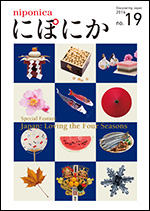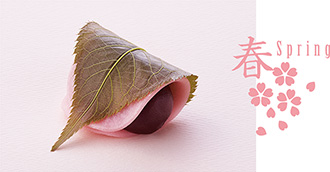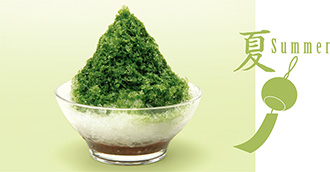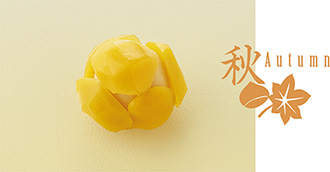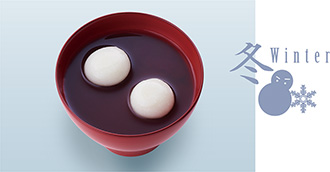niponica is a web magazine that introduces modern Japan to people all over the world.
2016 No.19
 Tasty Japan: Time to Eat!
Tasty Japan: Time to Eat!

Japanese Refreshment
Sweets for All Seasons
Photos and Collaboration: TORAYA Confectionery Co. Ltd.
Afternoon snacks are generally known in Japan as oyatsu and include treats like wagashi (traditional Japanese sweets) enjoyed seasonally. Folks in Japan get a sense of the season by the kind of confection seen in stores.
The charmingly apt name of oyatsu comes from a time designation of the Edo period (1603–1867) called yatsu, both the 2:00–4:00 PM period and the custom of eating seasonal snacks at that time. These nibbles are pleasant treats still favored in Japan today.
Choice oyatsu in spring, popular from the Edo period to today, are wagashi known as sakura mochi. The unique aroma of these sweets comes from the salt-pickled cherry leaf, which wraps around a thin outer layer of wheat dough and bean-paste filling. They vary interestingly in Western and Eastern Japan: in the west region, sticky rice is the dough of choice; in the east, it’s wheat.
Come summertime, the treat to eat is fluffily shaved ice—often frozen slowly, as in nature—cherished for its cooling effect and mouth-watering array of tasty syrups. One variety we highly recommend is Uji Kintoki, a delicious combination of green tea syrup and adzuki bean paste.
Autumn is the time for chestnuts and kuri kanoko, a bean paste ball covered with candied chestnuts.
As for something hot and sweet in winter, oshiruko is a heartwarming adzuki bean soup with floating mochi (rice cakes). Rice cakes are offered to deities for the New Year’s holidays, and a common family custom is eating oshiruko with mochi on January 11.
Oyatsu communicates a seasonal sense. In the calm repose of mid-afternoon, you too can savor the world of each colorful season arising from a single moment, in a single bite of sweet delight.

